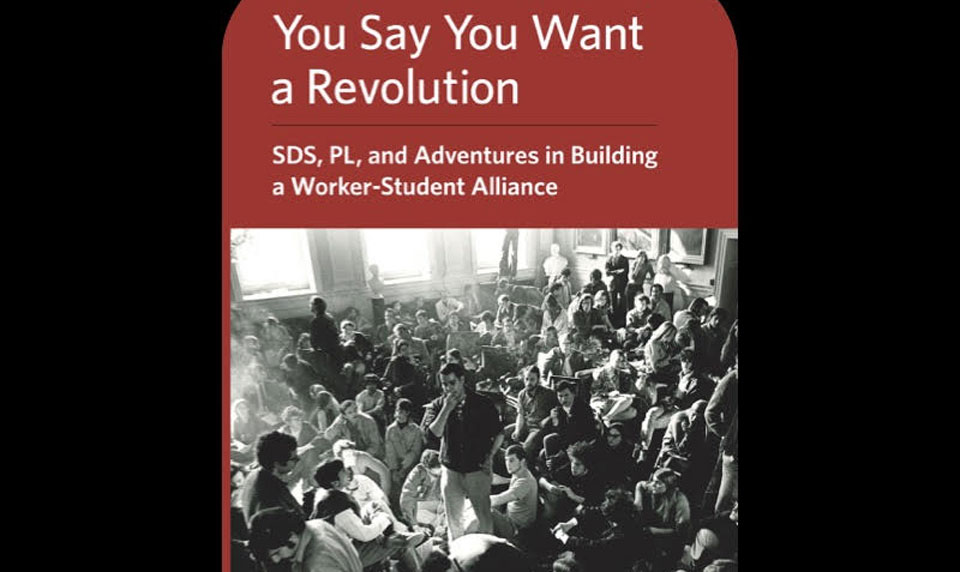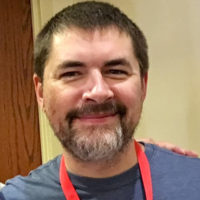
Participant reflections of the tumultuous 1960s student upsurge and the anti-Vietnam War movement are always a welcomed contribution to those interested in mid-20th century U.S. radical history. The collection of essays that constitute You Say You Want a Revolution: SDS, PL, and Adventures in Building a Worker-Student Alliance enlarge the historical lens – perhaps, intentionally, perhaps unintentionally – by focusing laser-like on just one of the myriad of groups that emerged during this time.
Students for a Democratic Society (SDS), was for a short period in radical history the largest, most vibrant student organization of the mid-to-late 1960s. PL, or the Progressive Labor Party (PLP), was a Maoist group that initiated the 1964 May 2nd Movement (M2M) protests against escalating U.S. involvement in Vietnam; the Worker-Student Alliance was PLP’s youth front that for a time worked to take over SDS.
You Say You Want a Revolution is full of interesting personal accounts, anecdotes that throughout the course of the book emerge into a larger narrative of youthful optimism, activism, excitement and often times disillusionment with PLP and its undemocratic decision-making structure, ultra-leftism, and eventual sectarian isolation.
For example, Ellen Israel, a red-diaper baby, was 19 in 1963 when she helped organize the first of two trips to Cuba. She noted, “those who traveled to Cuba,” in defiance of the State Department, “came from different backgrounds and had different motivations for going…[but] many went on to become progressives, activists and even radicals,” who helped to birth the anti-Vietnam War movement. Her story of the trip is worth briefly recounting not only for what it tells us about the courage and determination of the activists then bringing attention to the travel ban to revolutionary Cuba, but also for what it tells us about the aid of the socialist camp in making the trip possible, as well as the arrogance of some sections of the U.S. student movement.
After an earlier trip from Canada to Cuba had been canceled, Israel and the other youth activists were forced to find a more circumscribed route to the small socialist island. First, they flew to England, then France, then Prague, where Israel – now 20 – confronted U.S. officials who had taken some of the travelers’ passports. She told the agents they didn’t “have the authority to take valid passports from U.S. citizens traveling for their own purposes” and was shocked when they actually gave them back. Israel’s nerves got the best of her, however, and in a humanizing aside she recalls that she “promptly threw up” after the encounter. Reunited with the larger group, Israel added, “Czech officials [then] took all of us that night to the mountain vacation village of Karlovy Vary,” where they relaxed for a few days. The group was then taken back to Prague, where they boarded a Cuban plane and continued their trip.
While in Cuba the youth group went on a whirlwind tour, meeting with revolutionary leaders – they even played ping-pong with Fidel Castro and had discussions with Che Guevara – and participated in the July 26th celebrations then taking place, as Cubans celebrated the commemoration of the rebel attack on the Moncada Barracks in 1953, considered the start of the Cuban Revolution. While, as Israel put it, “we found…widespread support for and participation in the changes that were being implemented” since the revolution, some participants were also frustrated, as getting “a clear picture of the problems Cubans faced was hindered by rarely finding leaders who would admit to any shortcomings.”
Reflecting on the discussion with Guevara, the student activists come off as arrogant. Israel says that Guevara “was dismissive” of questions dealing with African history and the “forming of worker’s councils (soviets)” in Cuba as if students from the U.S. were better-equipped to address the development of socialism in Cuba. This type of myopic view is found throughout the various chapter narratives and is illustrative of the class perspective many of the youth activists drawn to the New Left then embraced.
In retrospect Israel rightly adds, the “May 2nd Movement ultimately suffered from the same sectarianism as PL’s other initiatives” and “PL increasingly prioritized public criticism of those who should have been their allies – the Vietnamese, the Cubans, the African liberation movements, and, eventually, China.
“Perhaps this is inevitable,” she added, for a group “that calls itself a ‘vanguard party’ – to feel superior to everybody else, to desperately try to look ‘different’ from other activist groups and movements, and, above all to be ‘correct.’” Eventually, Israel left PLP, though she credits “good people and actions in PLP” that helped to shape her political outlook long after the youthful exuberance wore off.
A contributor who participated in the Columbia student strike of 1968, noted, “As PL became increasingly isolated from the mass movements…their anti-intellectual, antitheoretical, and voluntaristic [sic] approach to rekindling revolutionary activity drove them into a dead end.” Both their “bad policies” and their “bureaucratic top-down organization” together lead to their isolation.
Another contributor added, “I concluded that PL was an organization whose attitude was that ‘everybody has sold out but you and me, and I’m not sure about you.’”
Possibly the most important lesson of You Say You Want a Revolution can be found in this passage by another contributor: “I also learned how to not follow PL’s example…In doing political work, I aim to build unity, not get into sterile ideological arguments [italic in original].”
While there are 23 different and illuminating personal accounts and anecdotes in You Say You Want a Revolution, they all follow the same trajectory outlined above: fond memories and relationships, some nostalgia, youthful, well-intentioned activism coupled with fascinating individual stories about this or that campaign, protest or rally, and the eventual disillusionment and a break with PLP.
The editors of this volume should be thanked for bringing these illuminating and insightful essays to publication. The lessons encapsulated in this volume may – hopefully – help other youth activists avoid the pitfalls and perils that lead PLP to insignificance.
You Say You Want a Revolution: SDS, PL, and Adventures in Building a Worker-Student Alliance
Edited by John F. Levin and Earl Silbar, 1741 Press, 2019, $18.95, 364 p










